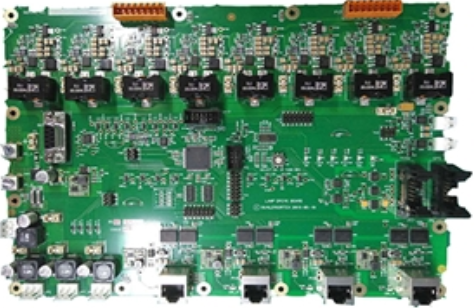1. Single-sided SMT mounting
The solder paste is added to the component pad, after the solder paste printing of the bare PCB is completed, the relevant electronic components are mounted through reflow soldering, and then reflow soldering is performed.
2. Single-sided DIP cartridge
The PCB board that needs to be plug-in is wave soldered by the production line workers after inserting the electronic components. After the soldering is fixed, the feet can be cut to wash the board, but the wave soldering production efficiency is low.
3. Single-sided mixed

The PCB board is printed with solder paste, and the electronic components are mounted and fixed by reflow soldering. After the quality inspection is completed, DIP insertion is performed, and then wave soldering or manual soldering is performed. If there are few through-hole components, manual soldering is recommended .
4. Single-sided mounting and cartridge mounting are mixed
Some PCB boards are double-sided, one side is mounted and the other side is inserted. The process flow of mounting and inserting is the same as single-sided processing, but the PCB board requires the use of fixtures for reflow soldering and wave soldering.
5. Double-sided SMT mounting
In order to ensure the aesthetics and functionality of the PCB board, some PCB board design engineers will adopt a double-sided mounting method. IC components are arranged on side A and chip components are mounted on side B. Make full use of the PCB board space and realize the miniaturization of the PCB board area.
6. Double-sided mixed
The following two methods are mixed on both sides:
The first method PCBA assembly is heated three times, the efficiency is low, and the pass rate of wave soldering using the red glue process is low, and it is not recommended.
The second method is suitable for cases where there are many double-sided SMD components and few THT components. Manual welding is recommended. If there are many THT components, wave soldering is recommended.
One of the most common problems encountered in the maintenance of electronic products is short circuit. The short circuit causes considerable harm to PCBA, ranging from burning components to scrapping. Only to avoid short circuits as much as possible, every step of the production must be grasped, and every suspicious point must not be overlooked during inspection.
If it is manual soldering, it is necessary to develop a good habit. First, check the PCB board visually before soldering, and use a multimeter to check whether the key circuits (especially the power supply and ground) are short-circuited; secondly, use a multimeter every time a chip is soldered Check whether the power supply and ground are short-circuited; in addition, do not throw the soldering iron randomly when soldering. If you throw the solder onto the solder feet of the chip (especially surface mount components), it will not be easy to find.
One of the most common problems encountered in the maintenance of electronic products is short circuit. The short circuit causes considerable harm to PCBA, ranging from burning components to scrapping. Only to avoid short circuits as much as possible, every step of the production must be grasped, and every suspicious point must not be overlooked during inspection.